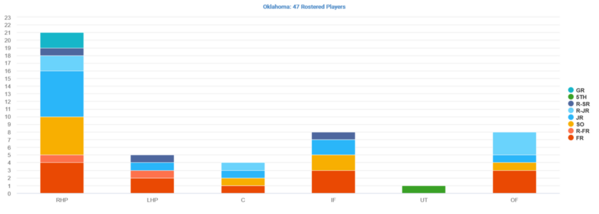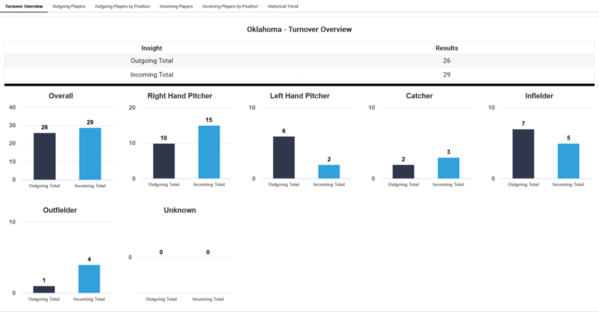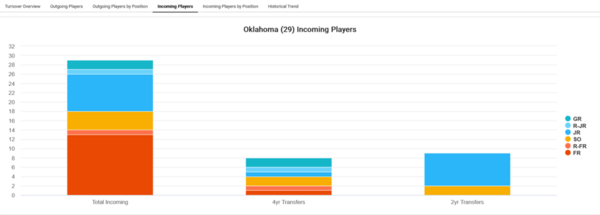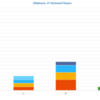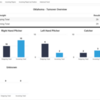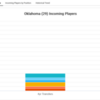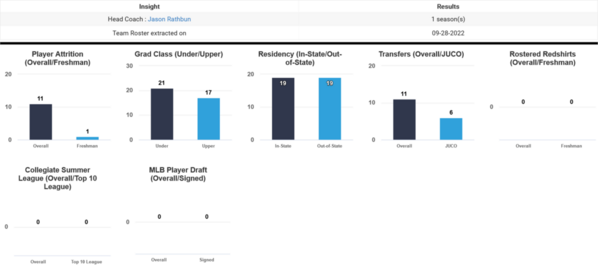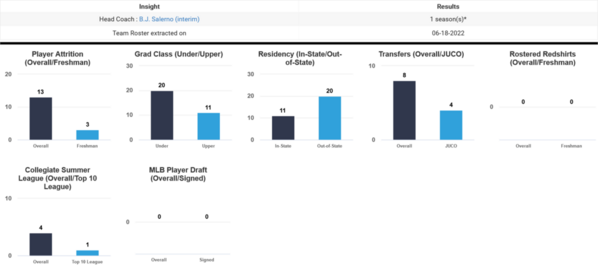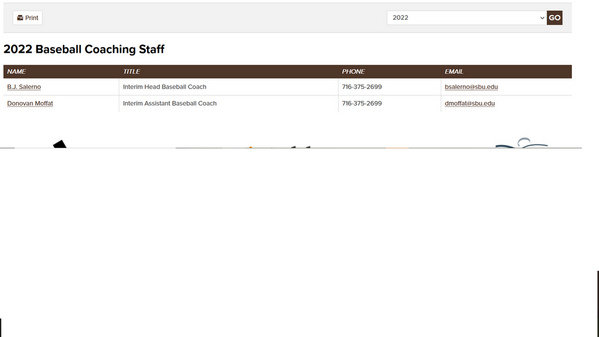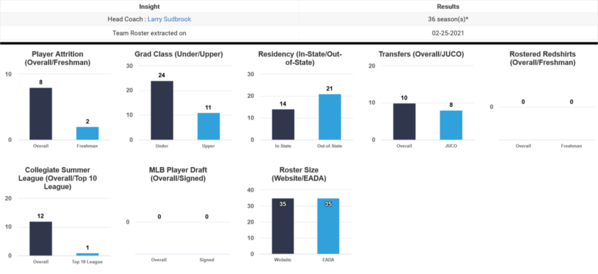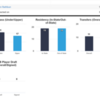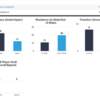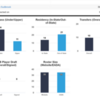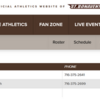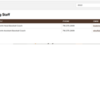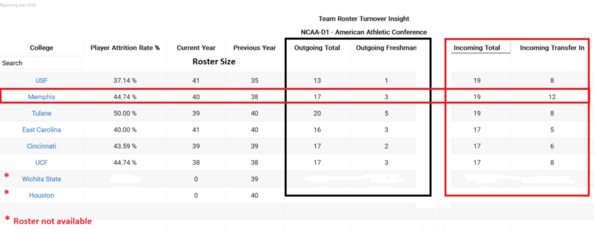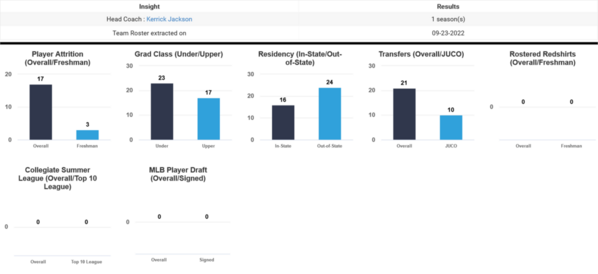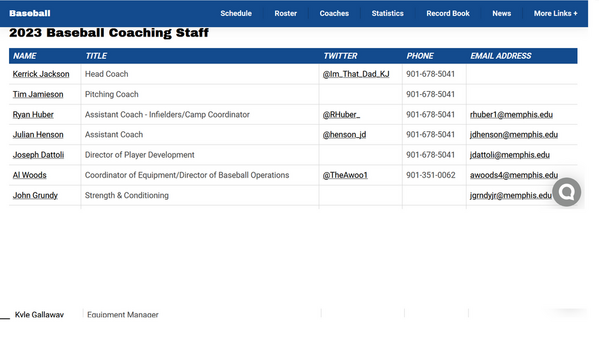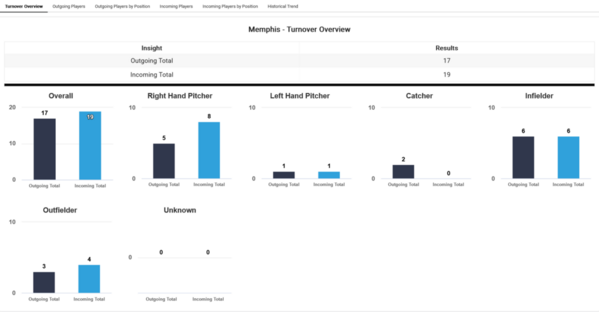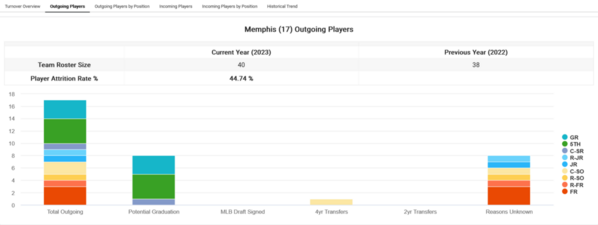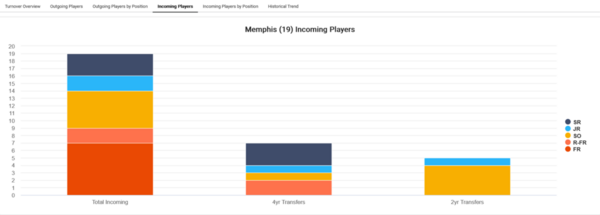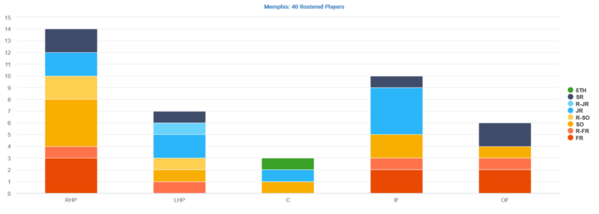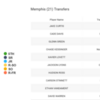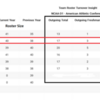Replies sorted oldest to newest
That's some really good stuff you gave them.
I like their page about investigating college programs online, but it's pre-covid/pre-transfer changes. They say to look at: "How many seniors have stayed from freshman year?" But a recruit also needs to ask: "How many of the upperclassmen are transfers from juco or other programs"? At some schools it's 80%.
Thank you. As a CBI subscriber the data was very valuable for helping our son. I have found the topic of "early commitments" much more complex than I thought when my son's college baseball recruitment journey began. I think the article's major takeaway topics really get at the heart of what recruits need to be able to do before making their commitment in order to not be "early." So, an emphasis on maturity of decision/focus as opposed to specific HS grade (although they certainly tend to go hand in hand).
Some unfinished thoughts:
The data doesn't seem to support making a decision in junior year as it relates to the risk of HC turnover. Given the deltas, it seems like sophomore or senior years make more sense from a purely quantitative basis.
While the article concludes that "early" commits are not provided an advantage, I am not necessarily convinced they are disadvantaged relative to the point they would have ended up in if they (and perhaps everyone else) just waited (ie the market adjusts/corrects itself).
CBI probably has some great data that could show correlations of HC turnover relative to key variables. The article notes the likely high correlation for underperforming programs in top conferences. Which makes sense. But, there is also the risk of high performing programs in non P5 conferences, high performing programs in which the school isn't investing incremental money, HC nearing retirement, etc.
Thanks CBI for highlighting an important topic with many intricacies.
@25Dad posted:Thank you. As a CBI subscriber the data was very valuable for helping our son. I have found the topic of "early commitments" much more complex than I thought when my son's college baseball recruitment journey began. I think the article's major takeaway topics really get at the heart of what recruits need to be able to do before making their commitment in order to not be "early." So, an emphasis on maturity of decision/focus as opposed to specific HS grade (although they certainly tend to go hand in hand).
Some unfinished thoughts:
The data doesn't seem to support making a decision in junior year as it relates to the risk of HC turnover. Given the deltas, it seems like sophomore or senior years make more sense from a purely quantitative basis.
While the article concludes that "early" commits are not provided an advantage, I am not necessarily convinced they are disadvantaged relative to the point they would have ended up in if they (and perhaps everyone else) just waited (ie the market adjusts/corrects itself).
CBI probably has some great data that could show correlations of HC turnover relative to key variables. The article notes the likely high correlation for underperforming programs in top conferences. Which makes sense. But, there is also the risk of high performing programs in non P5 conferences, high performing programs in which the school isn't investing incremental money, HC nearing retirement, etc.
Thanks CBI for highlighting an important topic with many intricacies.
Great points.
As you are aware, there are multiple level of data readiness, many of us have used different information datasets to try to figure out what is relevant.
Fortunately Keep Playing Baseball enjoys probing into the data and believe will provide more clarity to the information we've collected.
Keep the feedback coming,, it help us highlight what needs to be discussed.
@anotherparent posted:That's some really good stuff you gave them.
I like their page about investigating college programs online, but it's pre-covid/pre-transfer changes. They say to look at: "How many seniors have stayed from freshman year?" But a recruit also needs to ask: "How many of the upperclassmen are transfers from juco or other programs"? At some schools it's 80%.
Upon speaking to KPB, they are fully aware with the current evolving landscape.
The "Investigate Online Research" is a good starting point for many parents.
Subsequently, KPB in collaboration with CBI is adding more complex data driven content to their website.
https://keepplayingbaseball.or...f-the-juco-pipeline/
Note, CBI has the transfer data and juco pipeline data, so one should expect some interesting articles from KPB in the near future.
Potential case study
e.g Oklahoma 2022 Fall Roster (2023 Preliminary)
No. of players by primary position
Player Turnover by Position
Incoming Players (including transfers)
Total No. of transfers on team
Attachments
This is great stuff.
I hope that every HS prospect does their homework. Although C19 has created difficulties, hopefully the process will adjust itself in due time. The D1 portal is here to stay and will create less opportunity for HS players looking for P5 opportunities. Now it's hitting the mid D1 programs. Looked at 2 very successful ones this morning and each had 5 freshman (includes RS). That's crazy although many successful mid D1 programs do tend to recruit JUCO that can play asap.
If I had a talented player wanting to play out of HS, I would be careful not to shut him off too early. Yes, they want you but so does their competition. They should be recruiting you because you are a good fit for their program. That's pretty hard to tell 4 years in the future. JMO
There are many programs that recruit freshman. These programs work really hard at developing not replacing.
Know the difference.
That's important to consider.
Another consideration, will this guy still be here when I get there?
@TPM posted:This is great stuff.
I hope that every HS prospect does their homework. Although C19 has created difficulties, hopefully the process will adjust itself in due time. The D1 portal is here to stay and will create less opportunity for HS players looking for P5 opportunities. Now it's hitting the mid D1 programs. Looked at 2 very successful ones this morning and each had 5 freshman (includes RS). That's crazy although many successful mid D1 programs do tend to recruit JUCO that can play asap.
If I had a talented player wanting to play out of HS, I would be careful not to shut him off too early. Yes, they want you but so does their competition. They should be recruiting you because you are a good fit for their program. That's pretty hard to tell 4 years in the future. JMO
There are many programs that recruit freshman. These programs work really hard at developing not replacing.
Know the difference.
That's important to consider.
Another consideration, will this guy still be here when I get there?
Agreed.
Hopefully by collaborating with KPB, we can provide more context to the recruiting dynamics.
Thanks for the feedback
It's more than HC attrition.
It's the fantastic (younger) assistant coaches who bond with and teach a player; those particular coaches are pretty much constantly trying to climb the pyramid. When one of those guys leave, it can really rock a player.
Maybe also include staff turnover?
@Goosegg posted:It's more than HC attrition.
It's the fantastic (younger) assistant coaches who bond with and teach a player; those particular coaches are pretty much constantly trying to climb the pyramid. When one of those guys leave, it can really rock a player.
Maybe also include staff turnover?
I agree. However when support staff leaves it usually does not impact the program as they are not the decision makers.
There was a huge overall coaching staff turnover end of last season. In one particular instance the change probably will be the most dynamic example in turning a program around, yet many players decided to enter portal and some committs not come. The coaching change probably will be a positive for the program but player turnover negative.
JMO
@Goosegg posted:It's more than HC attrition.
It's the fantastic (younger) assistant coaches who bond with and teach a player; those particular coaches are pretty much constantly trying to climb the pyramid. When one of those guys leave, it can really rock a player.
Maybe also include staff turnover?
The objective of the article is to a baseline impact when a program changes Head Coaches there is a domino effect.
From a CBI perspective, our business scope is very simple, who is the HC , his tenure and the link to the coaches contact info on schools website, as the user reviews different years.
If you want to look at history, we hyperlink back to the specific information on the school website
Thus collecting and maintaining staff turnover is not feasible.
Attachments
Here is a listing of all head coaching changes for the 2023 season
Baseball Insite:
OUTSTANDING, Great info.
Many great teachers of life and the the game of baseball.
Bob
I find this list of 2023 HC changes very interesting! Why? A little quick history - My son is a 2024 RHP. He's a bit late to the recruiting game because he didn't start doing any type of showcase ball until summer of 2021. He got some attention in the fall of 2021 from several D1 schools but missed his whole HS session 2022 due to a basketball injury. Was on a top national team this summer and has been getting a lot more attention/interest.
What is interesting is that son is actively talking to 6 of the D1 schools on the list (just happened within the past 6 weeks) and has received interest from 4 others in the past 2 weeks. None of these schools he is talking to had shown any interest prior to this fall. So, I wonder with the changing of these HC did (1) the programs see a high number of current players enter the portal because of the coaching changes and (2) have there been a high number of "decommits" due the coaching changes? Could this be why these new coaching staffs are actively recruiting now? It could be nothing or it could be something. But, I find the timing of it interesting!
@BaseballMOM05 posted:I find this list of 2023 HC changes very interesting! Why? A little quick history - My son is a 2024 RHP. He's a bit late to the recruiting game because he didn't start doing any type of showcase ball until summer of 2021. He got some attention in the fall of 2021 from several D1 schools but missed his whole HS session 2022 due to a basketball injury. Was on a top national team this summer and has been getting a lot more attention/interest.
What is interesting is that son is actively talking to 6 of the D1 schools on the list (just happened within the past 6 weeks) and has received interest from 4 others in the past 2 weeks. None of these schools he is talking to had shown any interest prior to this fall. So, I wonder with the changing of these HC did (1) the programs see a high number of current players enter the portal because of the coaching changes and (2) have there been a high number of "decommits" due the coaching changes? Could this be why these new coaching staffs are actively recruiting now? It could be nothing or it could be something. But, I find the timing of it interesting!
Here is your next step.
Starting the beginning of september we started publishing 2022 Fall rosters (reported as 2023)
Of the 305 teams, 194 have posted their fall rosters
We've done some basic cleanup of their data, yep the data is still raw.
and some basic reconciliation of their data.
You can use our Team Roster Turnover Insights feature to quickly review any program. You can go back as far as 2017.
https://collegebaseballinsights.com/team-roster-turnover-insights-free/
Note, this is some of the insight we provide there are 5 more columns that I've suppressed from this image
Let's take Memphis as example
Current Year means 2022 Fall Roster size
Previous year means 2022 spring roster size
Outgoing means Players from 2022 spring that are not on 2022 fall roster
Incoming means self explanatory
2023 Team Roster Insights include Coach and Tenure
There is a hyperlink back to the website for coaches contact information
Player Turnover by Position
Outgoing player details, with reasons for leaving, note, unknown reasons means we have not found them on another schools roster (this insights changes as will import and reconcile other schools)
For now just focus on attrition rate
Incoming Players - what is the source, high school or transfers (4yr vs JUCO)
Overall number of transfers on the roster
The full roster with distribution by position and grade class
Attachments
I like the data about the coaching carousel by division. I would be curious to know whether the length of tenure for each division is similar or different. For example, for all the talk of "coaches need to win or they get fired", there are plenty of long-tenured coaches in D3 whose teams don't win that much. I'm sure there is no real way to break it down into "fired", "moved to a higher position," or "retired at the end of career," but it would be interesting.
@anotherparent posted:I like the data about the coaching carousel by division. I would be curious to know whether the length of tenure for each division is similar or different. For example, for all the talk of "coaches need to win or they get fired", there are plenty of long-tenured coaches in D3 whose teams don't win that much. I'm sure there is no real way to break it down into "fired", "moved to a higher position," or "retired at the end of career," but it would be interesting.
Agreed. It is in the pipeline, just not a top priority as for the cost outweighs the benefit.
The genesis of the blog:
Since inception in 2017, we've captured all HC coaching changes in CBI, the initial design included all coaches (Pitching Coach, Recruiting Coach, etc).
We know we can probably purchase a Coaching directory (later discussion)
Due to the constant changes and bandwidth challenge, we had to shut this feature down.
This summer we started posting changes social media (twitter), which seemed to provide value.
Ah ha moment, currently on;y D1 and D3 have a coaching change blog.
Since we had the information for all, why not create a full list by year with press release.
Reached out to KPB, asked if they would be interested in reviewing data and write a blog of their choice.
KPB decided on the Topic, which was a very interesting take.
Understanding that they have provided good context, there are some other perspectives that we are brainstorming to try to convey.
Thanks for the feedback.
My opinion is that the sheer number of coaches moving around slowed up the recruiting process.
CBI has laid it out nicely, use his info for reference.
Re D3 coaches who don’t win and keep their jobs …
It depends on the importance of winning in the athletic department. At a NESCAC before the current coach was hired the football coach and the baseball coach was the same person for years. Recruiting was mostly a matter of who showed up on campus who could play. Three wins was a successful football season. But, if you played hockey the coach had admission chits.
The head coach position at Harvard wasn’t funded by the athletic department until 2013. The coach hired in 2013 has a .428 win percentage. I don’t believe he’s in any danger of being fired.
“You may be beating us now. But you’ll be working for us later.”
@RJM posted:Re D3 coaches who don’t win and keep their jobs …
It depends on the importance of winning in the athletic department. At a NESCAC before the current coach was hired the football coach and the baseball coach was the same person for years. Recruiting was mostly a matter of who showed up on campus who could play. Three wins was a successful football season. But, if you played hockey the coach had admission chits.
The head coach position at Harvard wasn’t funded by the athletic department until 2013. The coach hired in 2013 has a .428 win percentage. I don’t believe he’s in any danger of being fired.
“You may be beating us now. But you’ll be working for us later.”
Agreed.
IMHO, the community understands one size does not fit all.
Here are the annual changes by division
| Year | NCAA-D1 | NCAA-D2 | NCAA-D3 | NAIA | NJCAA-D1 | NJCAA-D2 | NJCAA-D3 | CCCAA | NWAC | NCCAA | USCAA | Total Coaching Changes |
| 2017 | 33 | 36 | 40 | 29 | 18 | 23 | 12 | 6 | 6 | 3 | 8 | 214 |
| 2018 | 36 | 16 | 37 | 25 | 15 | 11 | 13 | 9 | 6 | 1 | 9 | 178 |
| 2019 | 21 | 26 | 47 | 27 | 28 | 34 | 18 | 7 | 4 | 4 | 13 | 229 |
| 2020 | 45 | 34 | 44 | 33 | 18 | 24 | 20 | 13 | 4 | 8 | 13 | 256 |
| 2021 | 15 | 10 | 26 | 16 | 14 | 20 | 4 | 5 | 2 | 1 | 2 | 115 |
| 2022 | 39 | 25 | 34 | 28 | 16 | 29 | 24 | 8 | 11 | 4 | 14 | 232 |
| 2023 | 44 | 25 | 30 | 25 | 18 | 17 | 6 | 6 | 5 | 1 | 3 | 180 |
| Total | 233 | 172 | 258 | 183 | 127 | 158 | 97 | 54 | 38 | 22 | 62 | 1404 |
| # of Teams as of 2023 | 305 | 251 | 386 | 202 | 172 | 144 | 92 | 88 | 29 | 20 | 32 | 1721 |

